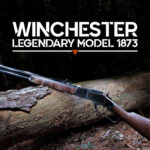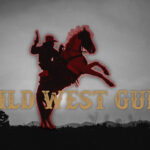
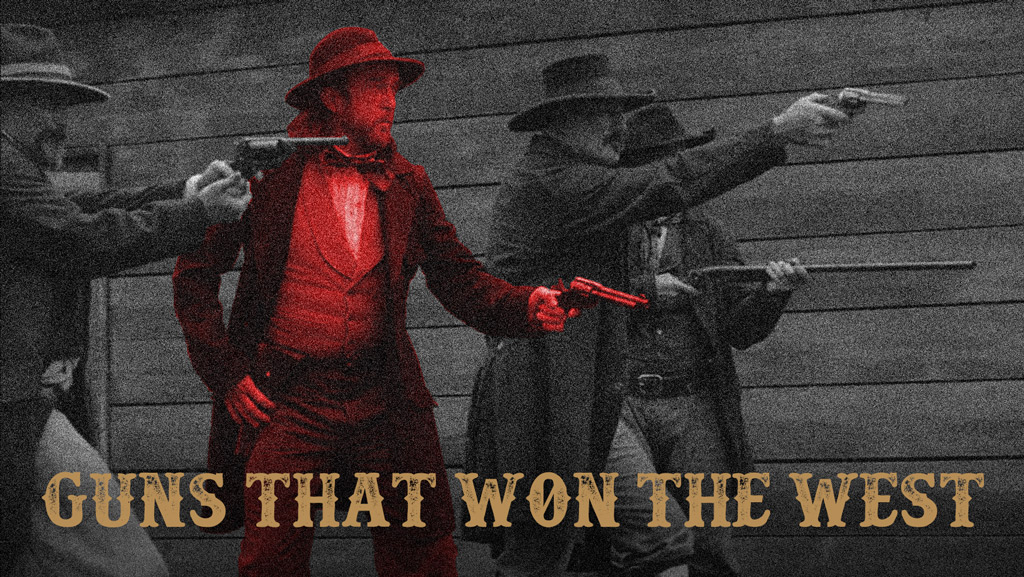
There are plenty of firearm manufacturers who’ve claimed to produce the guns that won the West. As long as there are Old West devotees, there will be debates about which gun actually should hold that coveted title. But the truth is there are no single firearms that officially tamed the western frontier. Just like there was never a lone lawman (sorry Wyatt!) that established law and order during those tumultuous times.
The best anyone can hope for is a list of influential guns that helped to shape those western territories. The list will be heavily subjective. Resulting in more debates and arguments. But here we go! Giving you five of the most famous guns of the Wild West. No one can say why they are noteworthy. Maybe it’s the quantity that was produced. Or the people that put them to use. They are well-known to all of those aficionados who study that exciting era and watch re-runs of Have Gun, Will Travel. This list is in no particular order of importance.
1851 Colt Navy Revolver
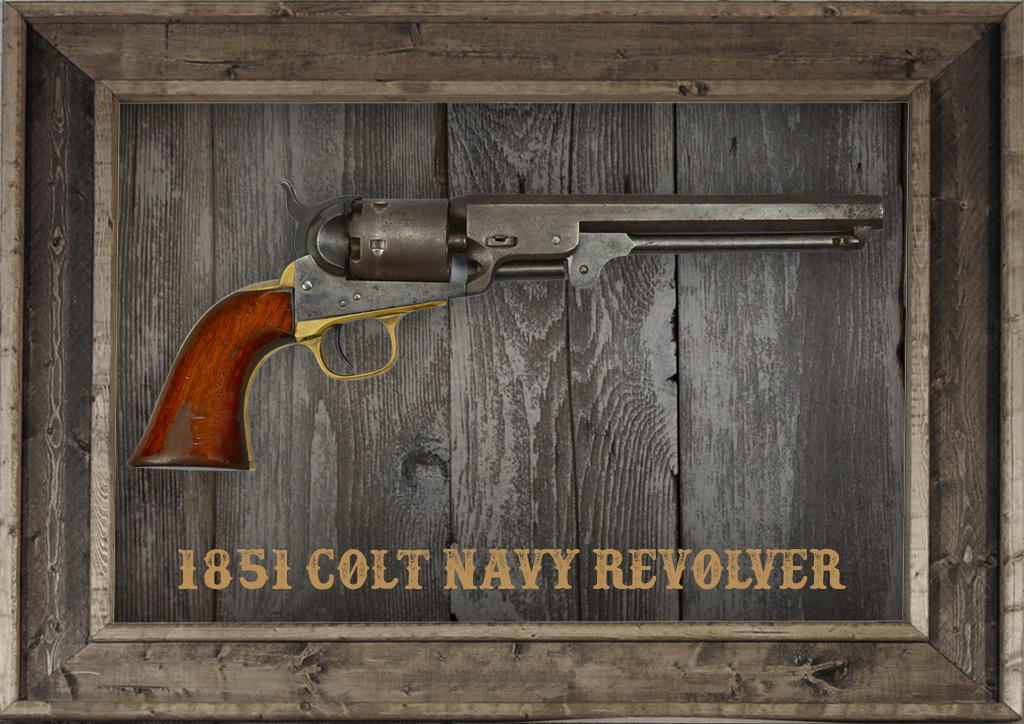
The six-round .36 caliber 1851 Colt Navy Revolver.
These handsome cap-and-ball six-guns were among the most popular in the Old West. Named for the Republic of Texas Navy. Manufacturing for over 200,000 was between 1850 and 1873. Accordingly, their reputation for smooth handling and perfect balance made these .36 caliber revolvers popular with some of the famous (and infamous) characters of that era.
Among those who preferred the “Navy” was Col. Robert E. Lee, while serving with the 2nd U.S. Cavalry during the 1850s; Confederate Gen. Nathan Bedford Forrest; outlaw John Wesley Hardin; gambler John Henry “Doc” Holliday; and James Butler “Wild Bill” Hickok. The revolver was in use by the Union army. The Confederate army reportedly made copies of it and handed them out to their troops during the Civil War.
By the 1870s, the Colt Navy Revolver was being converted to take .38 caliber metallic cartridges. For many years, it was one of the most popular handguns in the West. Its use continued after modern cartridge revolvers were introduced.
1866 Winchester Rifle
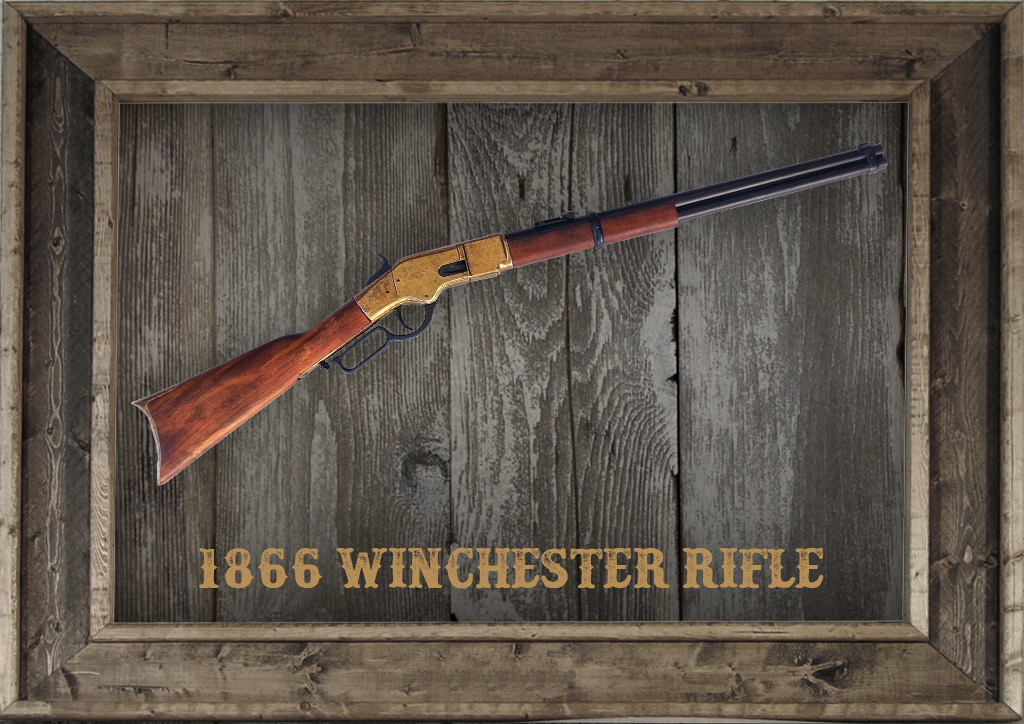
The 1866 Winchester “Yellow Boy” Rifle.
Known for its tough construction, manufacturing of the Model 1866 started in Bridgeport, Connecticut in 1867. Production took place between 1867 and 1898. More than 170,000 of these .44 caliber lever-action “repeating rifles” were manufactured. The model 1866 featured several improvements. Including a spring-closed loading port on the right-hand side of the frame. Conveniently located at the rear of the magazine tube. Previous models had loaded from the magazine’s muzzle end. This gave rise to the first reliable lever-action repeating rifle, the Winchester, Model 1866.
Dubbed the “Yellowboy” because of its unique brass receiver, the 1866 remained popular, in both carbine and full-rifle form. Even after centerfire ammunition had eclipsed the rifle’s rimfire type. The infamous 1890s outlaw Bill Doolin favored this rifle. So did Sioux (Lakota) medicine man Sitting Bull, 7th U.S. Cavalry scout Bloody Knife, and California Sheriff Harry Morse. Even the Ottoman Empire appreciated the advantages of the repeater. They purchased over five thousand, using them against the Russians.
Guns That Won The West: 1874 Sharps Rifle
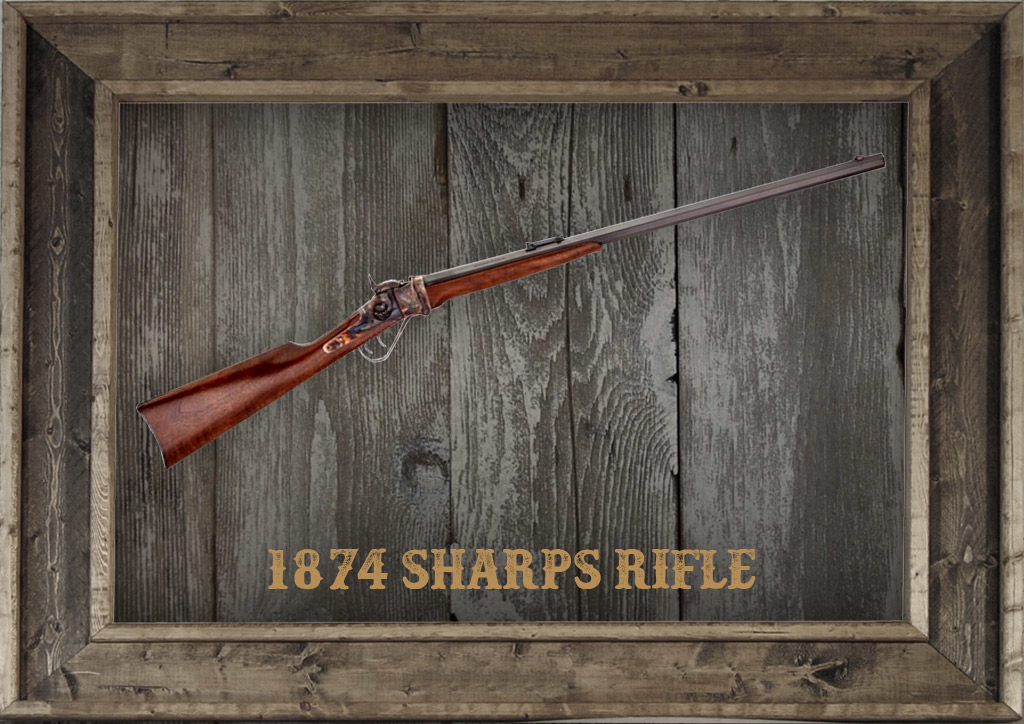
The large-bore single-shot 1874 Sharps Rifle.
Gun enthusiasts widely regard the 1874 Sharps as a sporting rifle. Manufacturing took place from 1871 to 1881. Impressively, production for over 12,000 of the various Sharps models were from scratch. The Sharps factory purchased Civil War percussion carbines to make the rest.
A favorite among buffalo hunters, the 1874 was offered in such potent big-game loads as .44-77, .45-70, .50-90, and .50-110. The basic Sharps cartridge comprised three parts. The powder, the bullet, and the case. What set it apart from the traditional Winchester or Colt cartridges? The components varied in size to create a unique caliber cartridge when combined.
The book Firearms of the American West, 1866–1894 explains it best. “What really enhanced the Sharps’ popularity among professional buffalo hunters and other frontiersmen was the line of cartridges designed for it. Cartridges so ideally suited for the plains that other single-shot manufacturers either copied them directly or devised cartridges which clearly reflected the Sharps influence.”
Among the rifle’s noteworthy proponents were U.S. Marshal Bill Tilghman, during his buffalo-hunting days, and Martha “Calamity Jane” Canary. Legend has it that hunter Billy Dixon used a .50-90 Sharps to fell an Indian from over 1500 yards at the Battle of Adobe Walls in June of 1874.
Colt’s Dragoon Revolvers
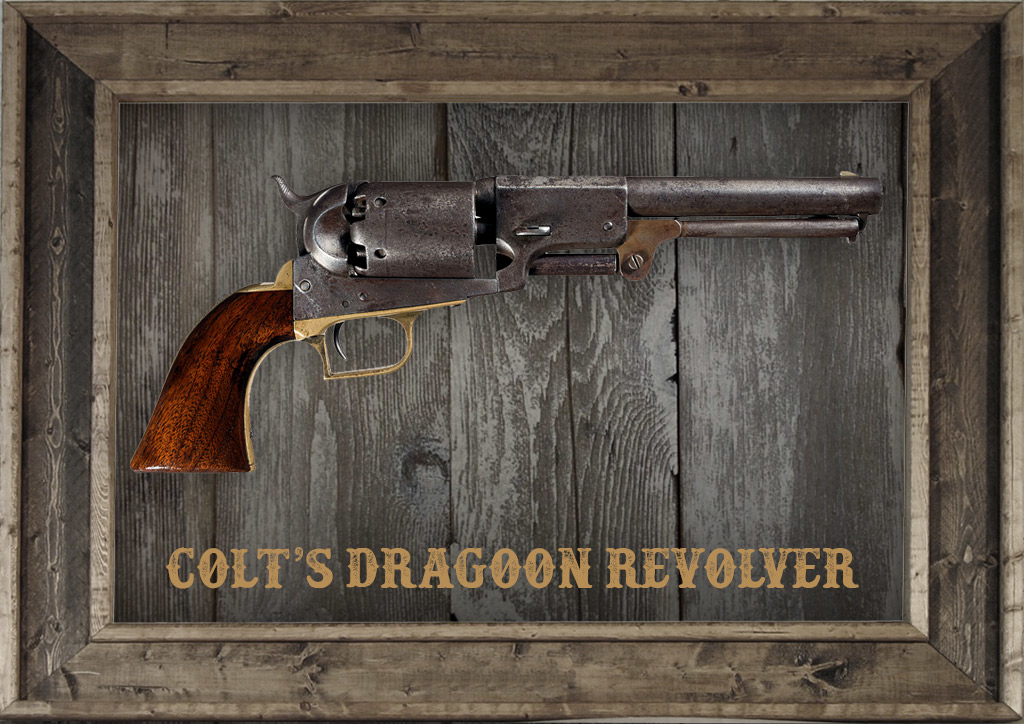
Colt’s .44 caliber Dragoon Revolver.
Colt’s Walker revolvers had various issues. As a result, the Dragoon became the answer. Some of the issues were exploding cylinders and dropping the loading lever upon discharge. Which could lock up the revolver action during combat, rendering it useless. The Dragoon was also several ounces lighter than the Walker. Making it more useful out of the saddle.
Production for over 21,000 Colt’s took place between 1848 and 1860. These formidable “horse pistols” became the favorites of both Western horse soldiers and civilians. The .44-caliber Colt Dragoons were issued to the U.S. Army’s Mounted Rifle troops, and they carried them in pommel holsters on their saddles.
The Dragoon’s famous users included Union general George B McClellan; California bandit Joaquin Murrieta Carrillo; and “Wild Bill” Hickok. Most believe Hickok carried the Dragoon pistol. Historians generally agree that he used a Colt Navy in his street duel with “Little Dave” Tutt.
Double-Barrel Shotgun
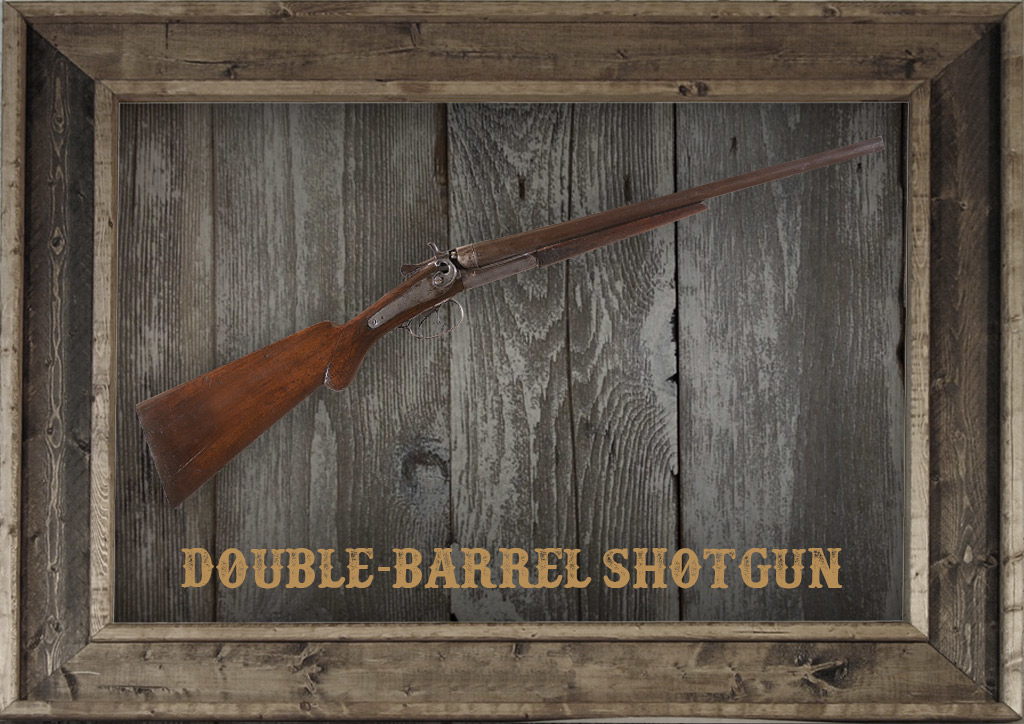
The double-barrel shotgun was a game-changer in the old west.
Rifles and six-shooters are typically the firearms credited with winning the West. One of the most economical and reliable weapons was the double-barreled shotgun. Everyone from cash-strapped settlers to lawmen, soldiers, Native Americans, hunters, and stagecoach operators appreciated the value of the twin barrel.
Shotguns were a popular choice, whether it was a muzzleloader or a breech-loading cartridge gun. Thousands of shotguns from a range of manufacturers and countries showed their versatility for hunting and defending in the often-hostile territories. Scatterguns may not have been the guns that won the West, but it wouldn’t have been tamed without them.


